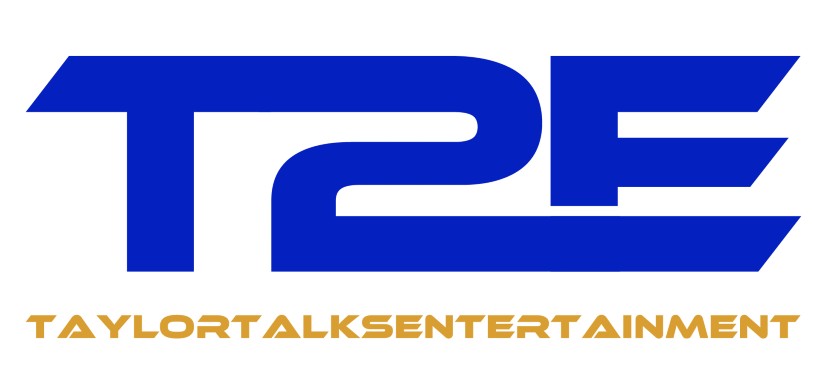I know I promised that I wouldn’t return to a Falcom property until I covered Ys X: Nordics and that piece will come. But before we can get to that I have unfinished business with a certain game that Falcom released within the last year. The recent localization announcement of Kuro No Kiseki brought the sequel Kuro No Kiseki 2: Crimson Sin to mind immediately and seeing as I have yet to cover it, I thought I should rectify that. Kuro No Kiseki set a brand new standard, ushering in a new era for the series. Does its sequel live up to that legacy, or does it fall short? Let us waste no time and dive into today’s feature, which is The Legend of Heroes: Kuro No Kiseki 2: Crimson Sin!
Introduction & Leadup to Release
Crimson Sin saw its Japanese domestic release on September 29, 2022, after being announced in December of 2021. The marketing and promotion of the title massively emphasized the additions to the Arkride Solutions Office as well as the primary antagonists. I’ll refrain from commenting on the new additions to the Arkride crew until we get to the narrative summary. But many fans of the original Kuro were likely invested in this game as our main antagonist was revealed to be a mysterious serial killer who could transform into a red variation of the Grendel power, which was employed by our protagonist of this arc, Van Arkride. Development interviews revealed that the initial building point of this story was around this red Grendel and the mystery behind it.

Falcom’s staff was split between working on this project and pre-production on the next game I’m planning to cover, Ys X Nordics. That being said, much of the development team behind the original Kuro remained consistent. This includes writing from the likes of; Hisayoshi Takeiri, Yuuta Miyazaki, and Syunsei Shikata, and the lead composers of the game were Hayato Sonoda, Shuntaro Koguchi, Mitsuo Singa, along with the one and only Yukihiro Jindo. Falcom oversaw the Japanese domestic distribution for the PlayStation 4 and 5 systems whilst experienced partner Clouded Leopard Entertainment developed PC, PlayStation 4, and 5 versions for the Korean and Chinese markets, with no officially announced localization contracts for worldwide release.


Synopsis & Writing
The year is 1209 of the Septian calendar, and a couple of months have passed since the eradication of the mafia Almata after having launched a campaign of terrorism across the Republic, thanks in no small part to the Arkride Solutions Office. This should have marked a time of peace for the Republic. However, the capital of Edith begins to cower in fear as a beastly serial killer begins another reign of terror across the Republic. In response the military, underworld forces, and Bracers begin to move to combat this threat. But more than that, Bracer Elaine Auclair independently seeks out an unlikely alley to turn the tide and resolve this before the monster can drown the Republic in this sinful revelry. Little do they know that Calvard will become the stage for a singularity that exceeds the Elysium incident.
The game wastes no time introducing us to our central antagonist; Grendel Zolga and plays up the mystery of who the man is behind the mask. The opening works hard to create real tension as we see this monster being able to cut through elite trained soldiers and even our own protagonists without breaking a sweat. Zolga’s presence in this story is continually felt even when he’s not on screen, which is the vast majority of the game.

The original Kuro gave us our main objective early on in the form of defeating Almata and recovering the family artifact of heroine Agnes Claudel, the Oct Genesis. The events of that game saw Almata being dealt with, and seven of the eight artifacts being recovered. Kuro dealt with a lot of subject matter within its runtime but the missing eighth Genesis was one of the few loose threads that were left up in the air for a potential sequel and here we are. Crimson Sin, however, doubles down and focuses on two primary threads: the defeat of Grendel Zolga and his accompanying artificial intelligence as well as the recovery of the eighth Genesis.
Unfortunately, the recovery of the Genesis aspect of the plot is the weakest part of the story. Whereas Van and company were recovering one artifact per chapter, Crimson Sin slows the process tremendously by splitting the artifact into several pieces with one piece being recovered per chapter. The game follows this formula for its first half, at which point the entire premise of the game changes. That being said, when Crimson Sin focuses less on this massive scavenger hunt and more on the characters involved we get some rather interesting developments.


Crimson Sin follows the traditions of arcs past and adds supporting characters from their first entry into the arc and promotes them to members of the main cast. Characters such as Kincaid, Elaine, Shizuna, and Renne are promoted to series regulars and serve a much more significant role in the events of Crimson Sin. These additions have their own gameplay benefits, but the true heart of Crimson Sin’s narrative is the growth of these characters from the original Kuro into Crimson Sin. This more character oriented approach allows us to dive into the psychology and mindsets of all these characters. The interactions between Van and Elaine in particular reveal a lot. They elucidate on their past relationship without explicitly stating it. Crimson Sin’s core narrative is transitionary in nature meant to expand on the ideas and characters presented in the opening of the arc and to set them up for what comes next in the story of Van and Calvard.

Unfortunately, while the mystery of Grendel Zolga’s identity is played up to an extreme degree, the ultimate reveal of who is behind the mask is not worth the time spent. Crimson Sin also continues the unfortunate trend of Falcom dropping plot twists or reveals with little to no buildup, which ends up feeling contrived. It’s akin to making up a mystery that delivers no clues yet results in a suspect that no sane person would conclude was the culprit. Crimson Sin also sets a potentially troublesome precedent of hiding story elements behind the optional post-game. Hajimari did this in a sense, but Crimson Sin explicitly hides important plot details behind its post-game offerings, which may not be to everyone’s tastes.
Gameplay
In 2021 Falcom redefined the Legend of Heroes franchise with Kuro No Kiseki. Series fans viewed Kuro as a fresh new experience that flipped the series on its head and provided a fresh approach to a battle system most players could play in their sleep by the time Hajimari no Kiseki rolled around. Crimson Sin further expands upon this new foundation to deliver something even more engaging and fresh by expanding on the classic turn based combat system and adding some checks and balances to Kuro’s more uneven combat mechanics.
Particularly, a lot of maintenance changes were made for balance. S-crafts were easily abusable even with the S boost feature limiting their use. Characters can now use one S craft per boost round, making their use more tactical. Crimson Sin also made history as this is the first game in the series that allows enemies to use the classic feature S-break, allowing them to defy the turn order to deliver a devastating attack. In a series that struggles with providing engaging difficulties this is a very welcome change as it encourages players to keep their guard up and not write a foe off just because their health is low. This is a change for the betterment of the series. Additionally there are new dual element magical arts that can target multiple weaknesses of the foe.

Traditionally the series has offered a turn based combat system, but Kuro once again innovated by adding an action based mode where you move and attack in real time. The mode, despite being a nice addition, was especially shallow when compared to any action RPG on the market, as players could only perform a three hit combo, dodge roll, and a heavy attack. In Crimson Sin it is still equally shallow and won’t be competing with Ys anytime this century.
There are two notable additions however: first is the addition of charged dodges. Dodging an enemy attack in real time at the right moment will allow you to switch control of your active character and instantly perform a heavy attack. The other new addition is the use of field arts. Characters have been able to cast magical arts in turn based arts since the start of this sub series in Trails in the Sky, but here in Crimson Sin you are able to use arts in real time battles, which the original Kuro didn’t allow for. There are caveats to this new ability, you can only use it with introductory arts of each element and the art itself is on a cooldown timer, which does limit its use. These additions, while appreciated, don’t do much to improve what still feels like a gimmick add-on and not a proper mechanic.

Concerning gameplay, Crimson Sin does introduce a couple new mechanics, but the majority of the effort went into refining the core experience of Kuro 1 into something truly special. It doesn’t rewrite the book of mechanics; it merely refines it into a more enjoyable experience.
Presentation & Score
Given that Crimson Sin was developed and released only one year after the original Kuro you wouldn’t be blamed for not expecting any substantial improvements on the presentation. But Crimson Sin manages to give us some new animations. Grendel Zolga of course gets the smoothest animations, but where I take issue is how returning characters were treated regarding model work. With a couple of exceptions, none in the Arkride Solutions Office have new designs. They literally reused their designs from Kuro 1. Even with games like Sen no Kiseki 2 with as little as that game offered, they gave the main cast new designs. Factors like this when combined with the lack of primary gameplay additions makes Crimson Sin feel like a glorified expansion instead of a full-priced sequel.
Crimson Sin may not have devoted much time to changing the visuals, but the sounds are a completely different story. All the battle lines have been re-recorded and the voice acting itself is the high point of the production. Daisuke Ono as Van is superb and manages to capture all of the varying nuances that come with the morally gray Spriggan.
Koguchi and Jindo always deliver superb pieces that elevate the scenes they oversee. Singa, despite his inconsistency and bizarre choice of instruments, continues to fill the niche where he shines best. His battle themes provide this sense of disorganized chaos that elevate the tension in the moment, and what he excels at are contextual event themes, pieces that might not be what everyone looks for on the soundtrack but wonderfully serve to set an atmosphere and scene.

Conclusion Kuro no Kiseki set a bold new precedent for quality in the franchise, and Crimson Sin attempts to live up to and exceed that legacy. In some aspects it does surpass Kuro by leaps and bounds, but in other respects it stalls. Second entries with an arc have always been at the end of the two extremes in quality, and Crimson Sin finds itself in an awkward position because of this. But Crimson Sin is still an enjoyable experience, which I recommend to fans of its predecessor when it comes West, particularly at a discount.





